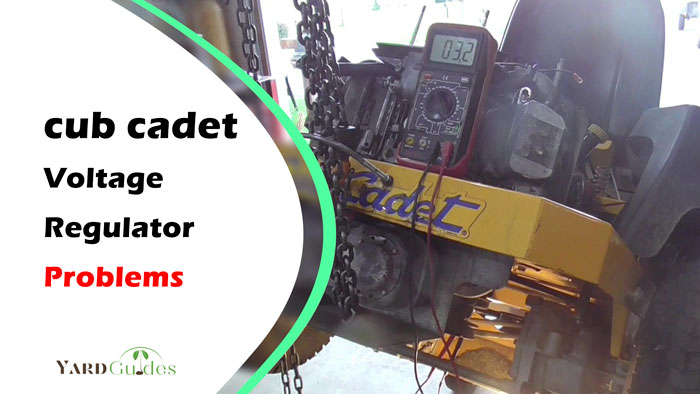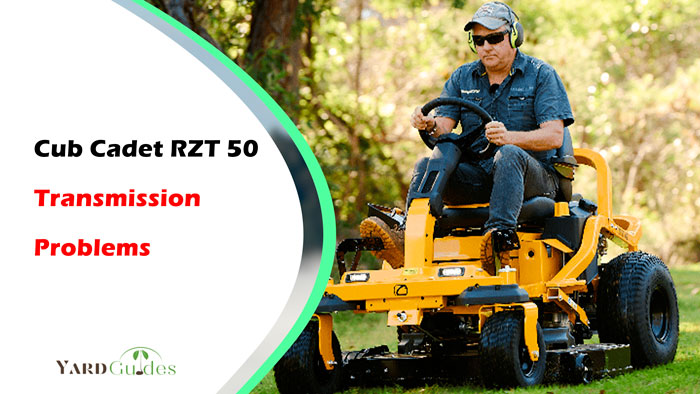One of the most common problems Cub Cadet owners face is voltage regulator malfunction. It is quite a complex problem and is frustrating. Knowing the potential causes of this and the fixes can help you stay stress-free in such a situation.
So, what are the causes of cub cadet voltage regulator problems? This could be due to damaged wires and low battery charge. Besides, overcharging can cause voltage regulator problems too.
In this article, we will explore the causes of this issue and provide quick and effective solutions to help you get your lawn mower back in shape. Keep reading for the precise solutions to the problem.
What is Voltage Regulator and Its Work?
A voltage regulator is an electronic component or circuit. It regulates and controls the voltage level in an electrical circuit. Its primary function is to maintain a steady and stable voltage output. It can do its voltage output duty despite any changes in input voltage, load current, or temperature.
A voltage regulator is an essential component in an electronic circuit. Because it ensures that sensitive electronic devices are protected from voltage fluctuations and maintain a stable and reliable power supply.
Symptoms of a Bad Voltage Regulator
The symptoms of a faulty voltage regulator differ based on the kind of regulator, the individual circuit, and the components involved. However, here are some common signs of a failing voltage regulator are given below.
- Dimming or flickering headlights
A bad voltage regulator can cause the headlights to dim or flicker, especially when the engine is idling or under heavy loads.
- Unstable voltage readings
The voltage readings may be unstable or fluctuate widely if the voltage regulator is being disturbed. Even if the engine is running smoothly.
- Electrical system malfunctions
A bad voltage regulator can cause other electrical components, such as the radio, dashboard lights, or power windows, to malfunction or behave erratically.
- Engine performance issues
In some cases, a bad voltage regulator can cause the engine to run poorly or stall, especially when accelerating or at high speeds.
Causes of Cub Cadet Voltage Regulator Problems and Quick Fixes
Let’s check the potential causes of the bad voltage regulators and their quick fixes.
| Causes | Fixes |
| Dirty Wires | Tighten or replace the wires |
| Low/High Battery Charge | Check the battery, charge it, or replace it if required |
| Damaged Ground Wire | Replace the ground wiring |
Keep in mind that the following are some common assumptions. Additional difficulties that you can face are potential. If you detect any further problems, take appropriate action.
However, now jump into the main discussion without any further due.
Problem 1: Dirty or Worn Out Wires
Dirty wires are a common cause of voltage regulator problems. If the wires are loose or corroded, it can cause intermittent charging issues, voltage spikes, or drops. Because they connect the voltage regulator to the alternator and battery.
Also, in some cases, it prevents the battery from charging properly. This can result in a dead battery, power loss, or even electrical system damage.
Fix
If you’re experiencing electrical problems with your mower, it’s important to check the wires that connect the voltage regulator to the alternator and battery. Here’s a step-by-step solution to help you solve this problem:
- Step 1: Locate the wires that connect the voltage regulator to the alternator and battery. These wires will usually be located near the engine and may be covered by a plastic casing.
- Step 2: Inspect the wires for any signs of damage, such as corrosion or fraying. If the wires are damaged, you will need to replace them with new ones.
- Step 3: If the wires are corroded, you can clean them using a wire brush or sandpaper. Gently rub the corroded areas until the metal is clean and shiny.
- Step 4: Then, reattach the wires securely to the alternator and battery.
- Step 5: Once you have checked, tightened and cleaned the wires, reconnect the battery and start your lawn mower.
- Step 6: Test the electrical system to ensure everything works properly.
Problem 2: Low/High Battery Charge
The voltage regulator regulates the amount of voltage supplied to the battery to ensure that it receives the correct amount of charge.
If it is not functioning properly, it can cause two main problems: overcharging and undercharging.
Overcharging occurs when the voltage regulator allows too much voltage to flow into the battery. This can cause the battery to leak and potentially damage other components of the vehicle. Overcharging may also cause the battery to become swollen and reduce its lifespan.
Undercharging occurs when the voltage regulator does not allow enough voltage to flow into the battery. It can cause the battery to become unable to hold a charge. This can happen if the voltage regulator fails to maintain a steady charging voltage and power supply to the battery.
The battery may become depleted, leading to a shortened lifespan and eventually resulting in a dead battery.
In both cases, a faulty voltage regulator can cause damage to the battery, making it unable to hold a charge. This can result in the vehicle being unable to start, leaving you stranded.
Fix
It is essential to have the voltage regulator checked and replaced if necessary. This way, it will eventually ensure that the battery is charged correctly and prevent any damage.
In addition, several other issues may arise. For instance, engine overheating or the instrument cluster issue. Voltage regulators may be involved in such circumstances. As a result, it may need to be examined by a professional and, if necessary, replaced.
Problem 3: Damaged Ground Wire
A damaged ground wire can cause various electrical issues in any machine. It can prevent proper grounding of the electrical system and can lead to voltage spikes, intermittent power loss, or other electrical malfunctions.
It can happen for various reason
- Over time, the metal in the ground wire can corrode, which weakens the wire and makes it more susceptible to damage.
- Ground wires can become damaged from normal wear and tear. Especially if they are exposed to the elements or are located in areas with heavy foot or vehicle traffic.
- Ground wires that are not installed properly or are installed in areas with high vibration can become damaged over time.
- They can be damaged by physical impacts, such as being hit by a vehicle or construction equipment.
Fix
In such a situation you may go through the steps below :
- Look for the damaged wire and trace its path to determine its length and gauge.
- Remove the damaged wire by disconnecting it from the component it is connected to. This may involve unscrewing bolts or removing clips.
- Measure the length of the damaged wire and cut a new wire to the same length. Make sure the new wire is of the same gauge as the original wire.
- Connect one end of the new wire to the component (battery) it was originally connected to. Then, route the new wire along the same path as the old wire and secure it in place using clips or bolts.
How to Prevent the Problems of Cub Cadet Voltage Regulator
Some useful preventative measures might be helpful for you to keep your cub cadet voltage regulator safe. Let’s discuss those preventions:
1. Regular Maintenance
Regular maintenance can prevent voltage regulator issues. Check your battery, alternator, and voltage regulator every few months, and replace any worn-out parts.
2. Keep your battery charged
Make sure your battery is fully charged before using your lawn mower. If it has been sitting for a long time, charge it before starting the mower.
3. Avoid overloading the electrical system
Do not overload the electrical system of your lawn mower by running too many accessories at once. This can put a strain on the voltage regulator and cause it to fail.
4. Keep the wiring clean
Keep the wiring in your lawn mower clean and free from debris to prevent corrosion. Corrosion can cause poor electrical connections and lead to voltage regulator issues.
5. Store your lawn mower properly
Store your lawn mower in a dry and cool place to prevent moisture from getting into the electrical system. Moisture can cause corrosion and damage to the voltage regulator.
So these are some of the common preventative measures that may help you keep your wheel friend problem free.
Conclusion
Finally, voltage regulator malfunction is a common issue faced by Cub Cadet owners, and it can cause frustration and inconvenience. However, the most common problems are dirty wires and low/high battery charge, and damaged ground wires. Replacing the voltage regulator may solve the problems.
Additionally, preventative measures such as regular maintenance, keeping the battery charged, and keeping the wiring clean can help prevent voltage regulator issues. Avoiding overloading the electrical system may also help in this case.



